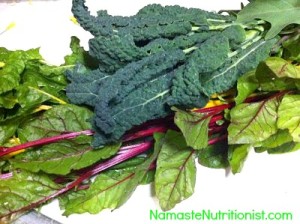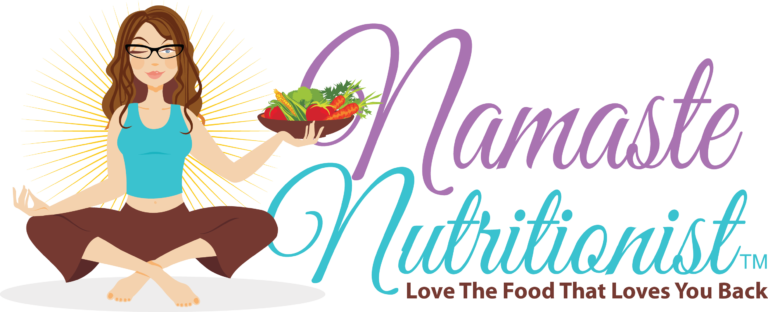Read the full transcript here.
Inflammation is both an angel and a devil to your health. It has taken front and center stage because inflammation has a powerful hand in both healing our bodies and in creating chronic disease. Certain afflictions, such as bronchitis, asthma, allergies, arthritis, and auto-immune disorders, have an obvious inflammatory component. But not so obvious is the chronic, low-level inflammation (“silent” inflammation) which is linked with diseases ranging from heart disease, diabetes, metabolic disease, cancer, depression, Alzheimer’s, and osteoporosis. It also promotes outward signs of aging – such as wrinkles, skin spots, sagging skin, and more. Elevated inflammation markers are a risk factor for many of the most common diseases of aging.
Squashing inflammation is rewarding and invigorating. That’s because when we feel healthy, we enjoy life more. Understanding inflammation’s role in the body is motivating to help us make smarter health choices. We can optimize our health and reduce chronic diseases – such as heart disease, cancer, obesity, metabolic syndrome, and more – by reducing chronic inflammation.
Someone you know NEEDS this information. Is it your parent, sibling, aunt, uncle, or child? Is it a co-worker, neighbor or friend? Be generous. Share this free health advice TODAY. It’s good karma.
Need help downloading the podcast? Click here.
How to download without iTunes or other software
Transcript:
Inflammation is both an angel and a devil to your health. It has taken front and center stage because inflammation has a powerful hand in both healing our bodies and in creating chronic disease.Certain afflictions such as bronchitis, asthma, allergies, arthritis, and auto-immune disorders, have an obvious inflammatory component. However, there is another form of chronic inflammation, considered as a low-level inflammation, (also known as a “silent” inflammation) which is linked with diseases ranging from heart disease, diabetes, metabolic disease, cancer, depression, Alzheimer’s, and osteoporosis. It also promotes outward signs of aging – such as wrinkles, skin spots, sagging skin, and more. Elevated inflammation markers are a risk factor for many of the most common diseases of aging.
What is Inflammation, and why do we get it?
It is actually an important physiological process that is part of our body’s healthy immune response. Inflammatory responses defend you and protect you. For example, acute inflammation helps the body heal from injuries, annihilate bacterial and viral invaders, respond to allergic reactions and poisonous bites. Mark, from “Mark’s Daily Apple.com” calls inflammation the “first responder” to injury, pain, illness, stress, and its presence promotes the swelling, redness, pain, and warmth around the injury. While uncomfortable and inconvenient, the warm, red and sensitive tissue around the injury are signs that your vascular system is working hard to deliver necessary immune-cell mediators, blood and plasma to halt the damage quickly and to repair whatever damage is there. Its role is to aid in healing your sick or injured parts. It also serves you by reminding you with pain/swelling/heat etc that there is a healing process taking place so allow it to rest and repair!
With all this good, how do we get into trouble?
Too much of everything can be bad! For starters, acute inflammation is meant to heal us from sudden and unusual occurrences. Its response time is very fast. Just watch what happens the next time that you cut yourself with a kitchen knife and bleed. Your finger bleeds then clots then turns red, sore and inflamed, then scabs and in a few days, the cut is a fading memory. Chronic inflammation, however, has become a bed mate in our current lifestyle. This means that we aren’t shutting off the inflammation. Like a good relationship gone bad, we just live with it because we don’t realize there is another way.
Modern diet and lifestyle are typically blamed for the bad relationship between us and our well-intended inflammation. And it’s for good reason – there are a lot of pro-inflammatory offenders in our modern lifestyle. Because of lifestyle, environment, genetics, food, and other factors, our bodies tend to over-produce inflammatory chemicals. Our primary offenders are stress, lack of exercise, genetics, exposure to toxins (i.e. second-hand smoke, excessive alcohol, and unhealthy foods, like trans fats)
Diet also plays a big role in redirecting the positive aspects of inflammation. Although lot of foods nowadays are convenient and yummy, don’t let that fool you because even foods that claim they are “natural”, such as corn syrup and highly processed fats, are akin to pouring gasoline on the flames of inflammation. If you are overweight, you pay a double-fine: being overweight increases inflammation & increases your risk-factors for diseases we mentioned earlier and it accelerates aging. It also makes it harder to lose weight, keeping you heavy and at higher risk for a kaleidoscope of diseases. If you are overweight, take this rule to heart: When people adjust their diet & lifestyle appropriately, losing weight does become easier, thereby reducing the risk factors and promoting a healthier, longer life. That’s good news, right?!
While inflammation is naturally occurring, and since it is an essential immune function, there is a lot you can do to mitigate, or reduce, your inflammation assault. Research suggests that even small dietary manipulation and other lifestyle changes can reduce inflammation and other risk factors for disease. In our pre-modern lives, like the times when at least one adult was able to cook all our meals from scratch and maybe even produce our foods on the homestead, we consumed a lot of foods that quelled bodily inflammation and helped manage the balance. With few exceptions, humans were more active, less stressed, the environment was cleaner, and most of our foods were fresher.
Compared to our present situation, it’s clear what our bodies actually prefer – regular & moderate exercise, fresh & unprocessed foods, clean air and water, and things that mitigate stress, a satisfying social life and more time to relax.
The GOOD news is this: you CAN balance the healthier lifestyle that our bodies need to preserve our health while still enjoying the high energy thrills and possibilities in modern life. This requires making relatively small adjustments to foods you eat every day and adding a little extra physical movement to your daily life. The small adjustments can make a HUGE difference!
So what can you do to reduce your chronic inflammation, or even better, keep it in check so that the body only utilizes it when absolutely necessary?
According to Monica Reinagel, founder of the Inflammation Factor rating system, many foods have a combination of inflammation-producing and inflammation-reducing factors. For example, a cantaloupe contains antioxidants that quell inflammation. But it also contains natural sugars that can have a mild inflammatory effect because of its glycemic load, or how quickly it converts to sugar in your bloodstream. Eating it with some protein, such as cottage cheese or plain organic yogurt, can reduce the rate at which sugars enter your bloodstream, making the combination a great pair. Reinagel also points out that a piece of lean beef contains both inflammatory saturated fats, as well as a surprising amount of anti-inflammatory monounsaturated fats.
Popular advice about “anti-inflammatory” foods is often based on just one or two nutrients, such as omega-3 fats or antioxidants and fails to consider the whole picture, which includes antioxidants, pro-oxidants, and other nutrient combinations. It can get rather confusing, actually! You might want to check out Monica’s website with references to recipes, books, and other useful anti-inflammatory tools at http://inflammationfactor.com You can look up your particular foods there too, http://inflammationfactor.com/look-up-if-ratings/.
What else makes foods inflammatory?
There are at least two dozen factors in a food’s inflammatory potential. First is the amounts, proportion, and type of various fatty acids. Second is the amount of antioxidants and other nutrients, and lastly, is the food’s effect on blood sugar levels or the glycemic index.
If you are allergic, intolerant, or sensitive to specific foods, it will be hard to know what you are to sensitive at first. All three factors mentioned above create a lot of inflammation when you eat offending foods. One great example is gluten intolerance: people who eat gluten end up with a very inflamed gut, which can eventually lead to inflammation migrating to other organs, such as the pancreas. This inflammatory assault, left unaddressed, will promote seemingly diabetes.
Food sensitivities can show up in a lot of seemingly unrelated symptoms that may not seem like much at first. Migraines, headaches, aches in joints and muscles, fatigue, irritable bowel syndrome, fibromyalgia, constipation, diarrhea, gas and bloating, are some if the many examples. All of these issues have an underlying inflammatory component and are frequently caused by food sensitivities. If you think you have a food allergy, you will need to see an allergist for guidance.
Show Notes:
- What are food sensitivities? Podcast is here.
The Inflammation Factor by Monica Reinagel. Look up the inflammation factor of specific foods here (like an avocado. =-) - Mark Sisson of Mark’s Daily Apple.com for great anti-inflammatory topics
Podcast: Play in new window | Download


